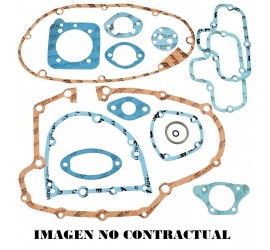


Despite having over 21 racing world titles to their name, the Derbi of today focus more on small-capacity scooters and off-road motorcycles than Grand Prix racers– but if we turn the clock back to around 40 years ago, we can see some of Derbi’s finest offerings, and some of the best Spanish motorcycles ever made. The 1973 Derbi 50cc GP Angel Nieto Replicaįounded in 1922, Derbi has enjoyed almost 100 years of glory in the motorcycle industry, having evolved from a humble bicycle rental service in Spain, to a World Championship winning factory racing team, before being absorbed by the Piaggio Group in 2001. While the name isn’t as famous as the usually referenced Bultaco-Montesa-Ossa and Gas-Gas foursome, the Rieju motorcycle company has made some absolutely incredible motorcycles. The Jaca was a remarkable success, and paved the way for more Rieju success in the future, with the company still going strong today where Rieju motorcycles can be found all over mainland Europe, in some parts of the UK, and you hear of the occasional import turning up in the States too. The new Jaca model was capable of producing a heady 3.5 horses of peak power and hit top speed of 43 mph…which was limited to 24 mph for the sake of moped regulations. Things changed in 1964, however, when Rieju entered into an agreement with Minarelli, and using their licensed engines, Rieju improved the Jaca. Over the next five years, Rieju would sell over 3000 units. In 1959, Rieju released their “Jaca” model, a small motorcycle that was economical to run and cheap to produce. It wasn’t until the late 50s that the Rieju name really began to take off though.

Unfortunately, the Spanish Civil War interrupted the company’s expansion, but after the war, the firm got back on track, enjoying multiple successes until they eventually branched out into building motorcycles in 1947. The pair lent their initials (RIEra and JUuanloa) to create the brands name. Based out of Figueres in Spain’s Catalunya region, the firm was founded by two friends, Luis Riera Carré and Jaime Juanola Farrés, in 1934. Originally founded as a bicycle accessories manufacturer, Rieju has become one of Spain’s most enduring motorcycle manufacturers. That’s the situation today, but what about the brands and models that we’ve lost? Here, we’re going to look at some of the best Spanish motorcycles that time has forgotten.ġ0 Spanish Motorcycles That Deserve To Be Remembered! #10.

Gas Gas have made waves in the States, alongside brands like Beta Motorcycles and Sherco, while old classics like Rieju and Derbi are still fighting the good fight in Europe. That being said, Spanish motorcycles have enjoyed something of a small Renaissance, with many smaller production factories grabbing international attention lately. From the original big Spanish names, only Ossa still survives: sure, Bultaco has been revived, and Montesa have partnered with Honda, but only Ossa have managed to soldier on without help…sort of. In fact, very few Spanish names still live on today. After Franco’s death in 1975, Spain relaxed its import situation, and most small Spanish manufacturers found themselves overwhelmed by the competition from Japanese multinationals, and unfortunately, most of these brands were forced to close down. In fact, some of these manufacturers managed to make an impression abroad, with some models being exported to the rest of Europe and the USA.ĭespite the success of small displacement Spanish motorcycles in the Grand Prix races of the 60s and 70s, it was mainly Spain’s off-road, trials, and enduro machines that garnered the most acclaim abroad. This time led to a golden age of Spanish motorcycles, with brands like Montesa, Ossa, and Derbi gaining in popularity across the nation. Unable to import from abroad, Spain had little choice but to build their own machinery. Motorcycle manufacturing was big business on the Iberian Peninsula, and when the Spanish weren’t building their own engines and fitting them into their own frames, they were working hard building licensed copies of foreign branded machinery too, working with the likes of Ducati, Moto Guzzi, and other makers of Italian motorcycles.įranco’s government ruled with strict anti-import policies which helped drive a bustling manufacturing industry, and after the ravages of the Civil War, the vast majority of Spain’s citizens found themselves in dire need of inexpensive, efficient, and economical transportation – and the motorcycle was the obvious choice. The 20 th century was a difficult time for Spain, with political power struggles, economic troubles, and civil war, but while most historians dwell on the negative points, 20 th century Spain gave birth to a diligent motorcycle industry that included more than 80 manufacturers at its peak.


 0 kommentar(er)
0 kommentar(er)
